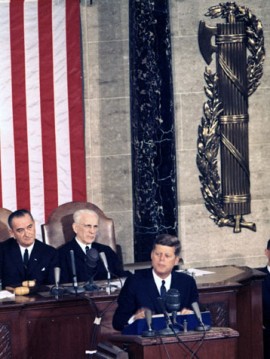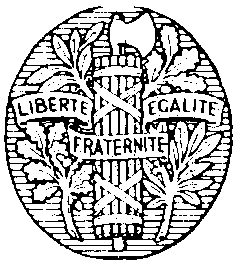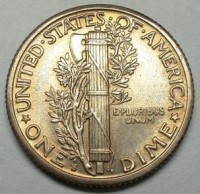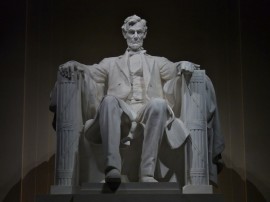
by Kevin Alfred Strom
IF YOU WATCH FOX NEWS or read political blogs you probably have a headache from all the accusations of “fascism” bouncing back and forth from left to right and back again. “Obama’s a fascist!” “Rush is a fascist!” “Bush is a fascist!” “The Zionists are fascists!” “Your grandmother’s a fascist!” “Kevin Strom is a fascist!” And then we have that ridiculous neologism “Islamofascism.”
Modern Republicans and Democrats both misuse the term “fascist” — and to such a degree that the misuse has started to be enshrined in dictionaries.
In the broad sense, the term (from the Latin for “bundle”) just refers to the strength of a united people — as in the ancient Roman story in which a father asks his sons to gather sticks from the forest and bring them to him. Taking the wooden rods one at a time, he easily breaks each of them in two. But when the very same rods are bound together — symbolizing a united family or people — they are unbreakable.

The fascist symbol, or fasces, usually with the rods bound around an axe to signify authority, thus became the symbol of the Roman Republic and its ideals. It was also used by the French republic, was adopted by Mussolini’s 20th century Fascist movement, and was also used by the United States during the same era — among many others.
The U.S. dime displayed the fasces on its reverse from 1916-1945; and it is displayed prominently to this day in the main chamber of the U.S. Congress.
It’s also a prominent element of Daniel Chester French’s highly idealized sculpture in the Lincoln Memorial.
In the narrow sense, fascism means specifically the socio-political movement popularized by Benito Mussolini and to some degree carried on into more recent times by the Movimento Sociale Italiano.

It was characterized by the ideal of the state as expressing the will of the people, with the people being an organic, natural entity, not divided into classes with differing economic interests but instead with each sector of society (such as farmers, laborers, administrators, merchants, et cetera) able to elect its own legislative representatives. In practice, many compromises were made with allies and with the old order of things.
The central government and ruling party had a lot of authority under Italian Fascism, and that is really the only similarity real fascism shares with the pop-definition of the word. But other central governments and parties past and present had similar or greater degrees of authority — such in fact being the norm for almost all human societies throughout history.

The pop-definition of “fascist” is roughly “big, bad, scary, and mean authoritarianism.”
“Fascist” is used by the Democrat gang to refer to the Republicans and their often authoritarian views on (among other things) war, drugs, and sexuality — and by the Republican gang to refer to the Democrats and their often authoritarian views on (among other things) freedom of association, financial privacy, and taxation.
It’s misused that way because both sides think they can make brownie points by scaring voters with the spectre of authoritarianism from the rival gang.
Here’s the truth: both modern Republicans and modern Democrats score pretty high on the authoritarianism scale — somewhat higher, I’d say, than the Movimento Sociale Italiano.
